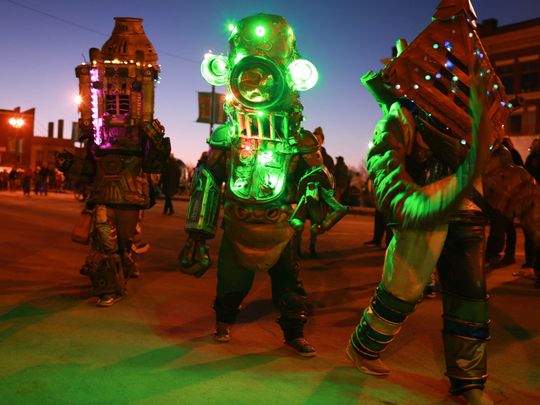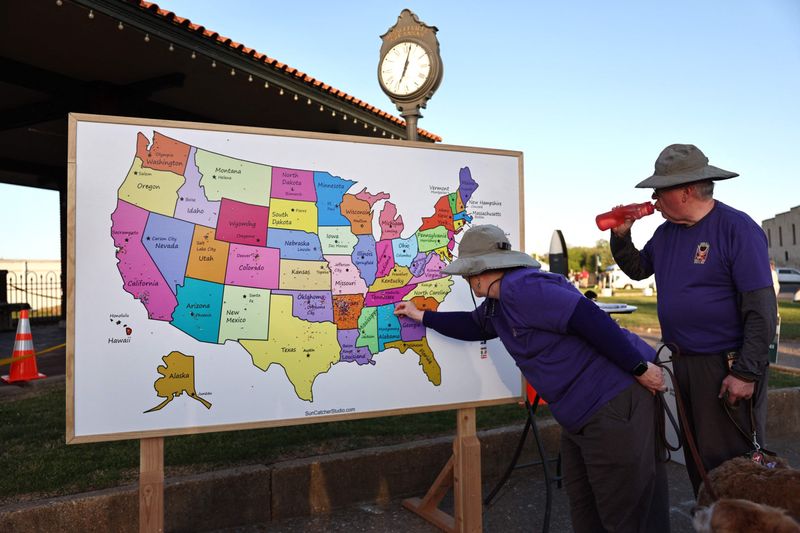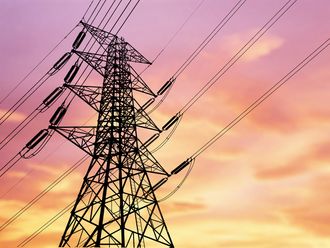
Washington: A total solar eclipse will have millions of people across a heavily populated swath of North America gazing toward the heavens on Monday as the moon completely blocks the sun for more than four minutes in some locales.
The eclipse will be viewable, weather permitting, along a path starting in Mexico and then crossing through the United States and into Canada.
Eclipse fans are gathering in places along the “path of totality” including the city of Fredericksburg in central Texas, where the total eclipse will occur shortly after 1:30pm (1830 GMT).
That is where Michael Zeiler, a veteran eclipse chaser from New Mexico who already has witnessed 11 total eclipses across the globe, plans to be.
“First-time viewers of a total eclipse will be gobsmacked by the sight,” Zeiler said. “It will be a peak life experience.”
At up to 4 minutes and 28 seconds, this one will last longer than the total eclipse that streaked across parts of the United States in 2017, which clocked in at up to 2 minutes and 42 seconds.
According to NASA, total eclipses can last anywhere from 10 seconds to about 7-1/2 minutes.
Some cities along the path of totality include: Mazatlan, Mexico; San Antonio, Austin and Dallas, Texas; Indianapolis, Indiana; Cleveland, Ohio; Erie, Pennsylvania; both Niagara Falls, New York, and Niagara Falls, Ontario, site of the famed waterfall, and Montreal, Quebec.
A partial eclipse will be visible in North America outside the path of totality.

Interruption in nature’s status quo
About 32 million people in the United States live within the path of totality, with federal officials predicting another 5 million people will travel to be there.
This will be the ninth total eclipse for Anthony Aveni, author of the book “In the Shadow of the Moon: The Science, Magic and Mystery of Solar Eclipses” and a professor emeritus of physics and astronomy, sociology and anthropology at Colgate University in Hamilton, New York.
“It’s an interruption in nature’s status quo,” Aveni said.
“And it’s an interruption that takes your breath away.” Forecasters have said the weather could be cloudy in a large portion of the path of totality.
Zeiler, a cartographer and amateur astronomer, said he will study satellite images in the hours before the eclipse and will hustle if needed in his car at the last moment to a spot where a clear skies are expected. Zeiler created the Great American Eclipse website, filled with maps and data on eclipses.
It will take about 80 minutes from the moment the moon first begins to cover the sun to the moment of totality, then another 80 minutes to complete the process in reverse.
Experts have advised eclipse viewers to use protective solar glasses to prevent eye damage from looking at the sun with the naked eye. Only during the few minutes of totality can the sun can be safely viewed without such glasses, they said.
Eclipse veterans have described the 15 minutes before totality as foreboding, with shadows becoming oddly crisp and sunshine assuming an eerie quality. In the seconds before totality, a phenomenon called “shadow bands” may appear - shimmering shadows on the ground, like those seen on the bottom of a swimming pool.
The last remaining bit of brilliant sunlight before totality creates a “diamond ring effect” in which a single bright spot appears along the lunar edge even as the sun’s atmosphere leaves a ring of light around the moon.
Aveni said each eclipse he has witnessed has inspired deep awe in everyone around him who saw it, igniting a sense of community. He said people frequently burst into tears and hug complete strangers.
“No matter who you are or when you lived, the sight of an eclipse begins with fear,” Aveni said. “The imagery shocks you.
That fear is gradually transformed into awe and then into a sublime state.”












